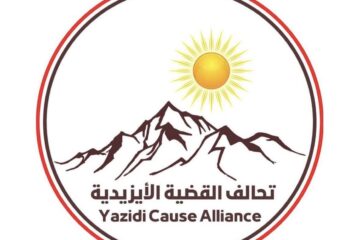Ezidi Cultural Heritage Under Threat in Alikelle: Cemeteries Desecrated by Treasure Hunters
Alikelle, Çaldıran, Turkey

The cultural and religious heritage of the Ezidi people in eastern Turkey is facing quiet erasure. In the Alikelle district of Çaldıran, ancient Ezidi cemeteries—considered sacred in the Sharfadin faith—are being desecrated by treasure hunters and left vulnerable under the shadow of institutional indifference.
For years, these burial grounds have stood as markers of Ezidi presence and spiritual continuity in a region that has witnessed repeated waves of displacement and marginalisation. Now, with illegal excavations increasing and visible destruction of ancestral tombs, only fragments of this legacy remain.
“This is not just an attack on graves. It’s an attack on memory, on existence,” said Alikelle’s neighbourhood headman, Kadir Öztürkçü, who has issued an urgent public appeal for protection and restoration.
A Historic Region, Left to Decay
Alikelle and its surrounding areas bear the scars and stories of countless civilizations, including the centuries-long presence of the Ezidi Kok Ağa family, who were once a prominent part of the social fabric under Ottoman rule. On the road between Alikelle and Yeniyaka, a now-crumbling fortress and its adjacent cemeteries remain as some of the last standing structures tied to that legacy.
But the site has become a target. Of the five ancient domens (stone burial chambers) that once stood in the area, only two have survived. The others have been looted, destroyed, or irreversibly damaged by treasure seekers digging illegally and unchecked.
These tombs were not merely burial places—they were holy sites, where the Ezidi faithful came to pray, remember, and remain connected to their lineage. In Sharfadin, such places are deeply sacred. Their destruction signifies more than physical loss; it represents a severing of spiritual ties across generations.
A Loss for All Humanity
Headman Öztürkçü made a broader appeal, addressing descendants of the Kok Ağa family now living in Russia, Georgia, and Armenia, and urging them to become active in preserving this shared heritage. He also called on local and international cultural institutions to intervene before the damage becomes irreversible.
“This is not just about the Ezidis. It is about all of us. About what we inherit and what we choose to protect,” he said.
“If preserved properly, this region can become a site of spiritual reflection and historical tourism—benefiting both culture and the local economy.”
The Silence Around Ezidi Heritage
Despite repeated calls, there has been no systematic state intervention or protective status granted to these sites. The ongoing erasure of Ezidi memory through neglect—whether through the silence of institutions or the destruction caused by treasure hunters—is yet another chapter in the long history of marginalization of the Ezidi people.
The cemeteries in Alikelle are not ruins of the past. They are living history, carrying the stories, struggles, and faith of an ancient people. Failing to protect them is not just a disservice to one group—but a failure of cultural responsibility on a global scale.
Preserving these cemeteries, restoring them with dignity, and securing their future means honouring the memory of those who came before—and safeguarding a space where Ezidis can continue to exist in dignity and peace.
About the Kok Agha lineage
The Kok Agha lineage was a prominent Ezidi ruling family whose influence spanned from the 17th to early 20th century across regions now part of eastern Turkey, Armenia, and Georgia. Their leadership played a central role in shaping Ezidi political, military, and spiritual life, particularly during periods of Ottoman and Persian imperial contestation.
Origins and Authority
The Kok Agha family emerged as leaders within the Ezidi people under Ottoman authority. Their domain included villages like Alikelle, Yeniyaka, and other parts of the Çaldıran region. Their leadership was not tribal, but dynastic and territorially grounded—a significant distinction from surrounding power structures.
The family led an Ezidi principality, sometimes referred to as the Emirate of Kars/Karslı Emirlik, and were recognized not only as local rulers but as spiritual leaders within the Sharfadin faith. Their rule persisted across different states, from Ottoman to Russian imperial transitions, especially as many Ezidis were resettled or displaced by war and politics.
Military and Political Role
Members of the Kok Agha family, such as Xelîl Agha (Khalil Agha), became highly respected military leaders under the Russian Empire in the 19th century, serving in battalions composed of Ezidi fighters. Despite serving foreign powers, the Kok Agha retained their independent identity and were never subsumed into Kurdish tribal structures.
Cultural and Spiritual Significance
The Kok Agha lineage is central to the Ezidi collective memory. The legend of Zarif Khatun, a female leader from this family who heroically resisted religious conversion and was ultimately martyred. Her story is part of Ezidi oral tradition, symbolizing the family’s unwavering commitment to their faith and community.
Their cemeteries—particularly those near Alikelle and Yeniyaka—contain stone tombs and holy sites regarded as spiritually potent in the Sharfadin religion. These sacred spaces were once sites of pilgrimage and prayer, and their desecration today represents a rupture in the Ezidi spiritual continuum.
The Kok Agha lineage was a dynastic, non-tribal, and distinctly Ezidi ruling family who played a key political, military, and spiritual role for centuries. Their legacy is embedded not only in the physical structures they left behind—such as fortresses and tombs—but also in the living memory and oral history of the Ezidi people. The destruction of their burial sites is not merely archaeological loss; it is an assault on Ezidi identity, history, and dignity.


0 Comments